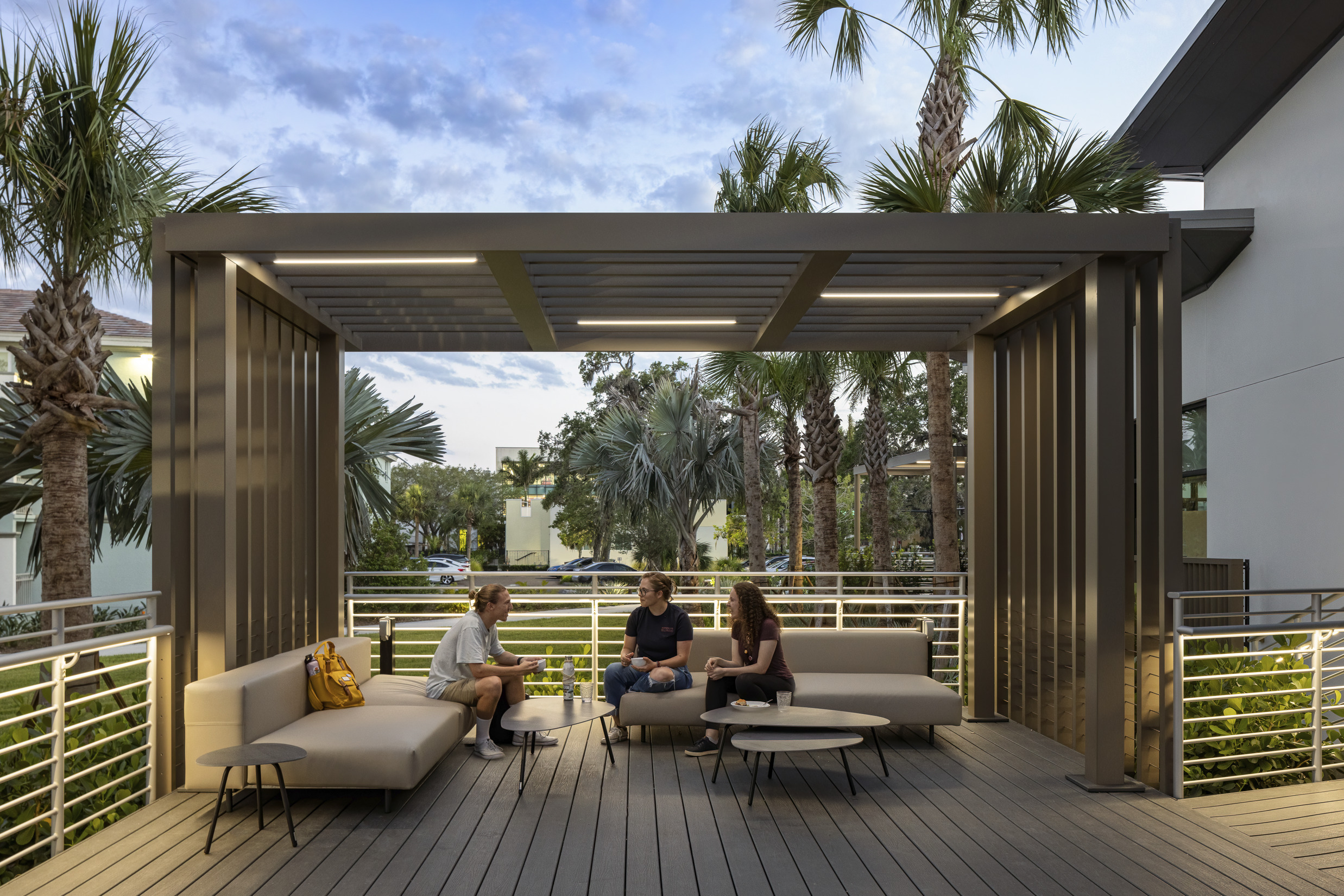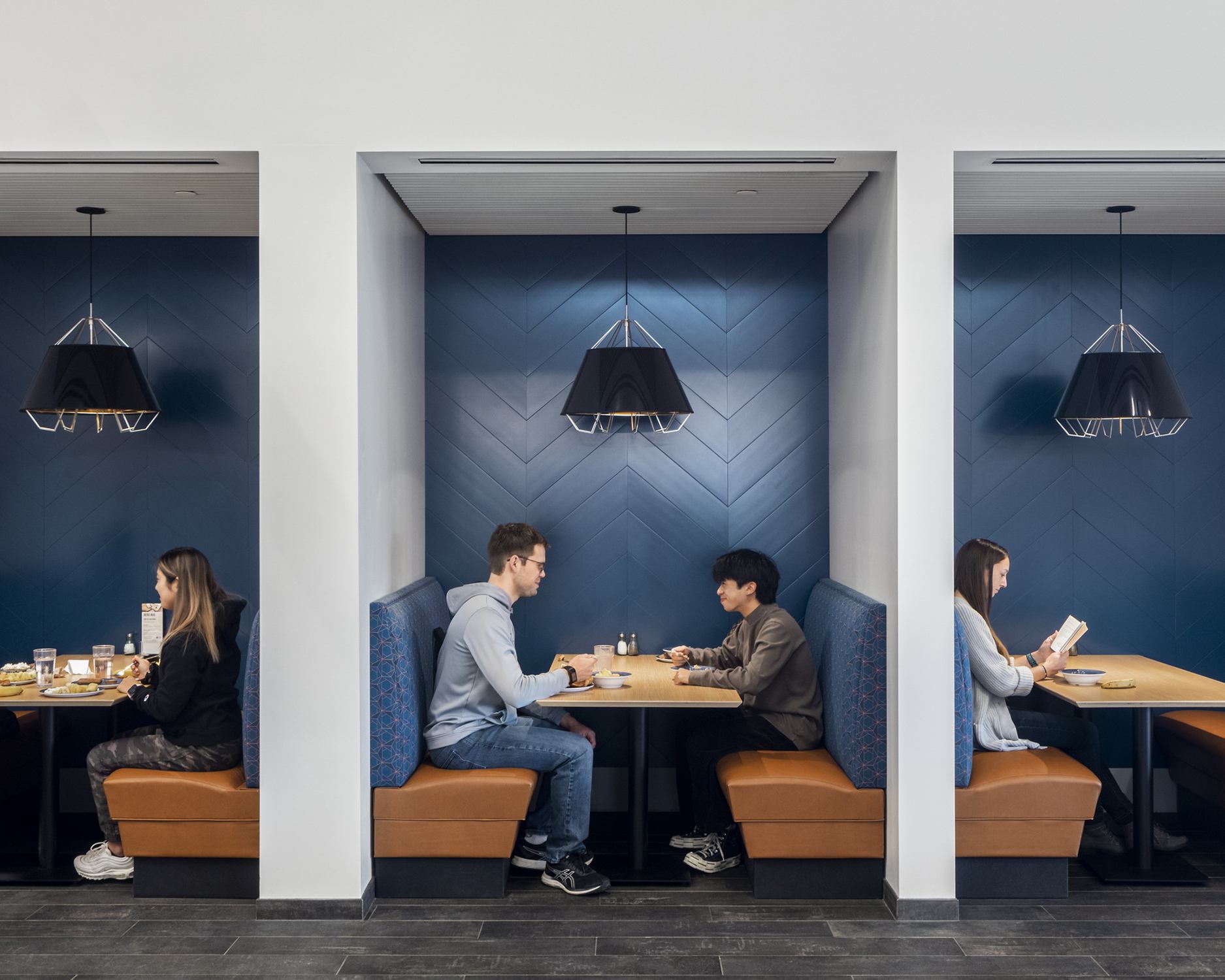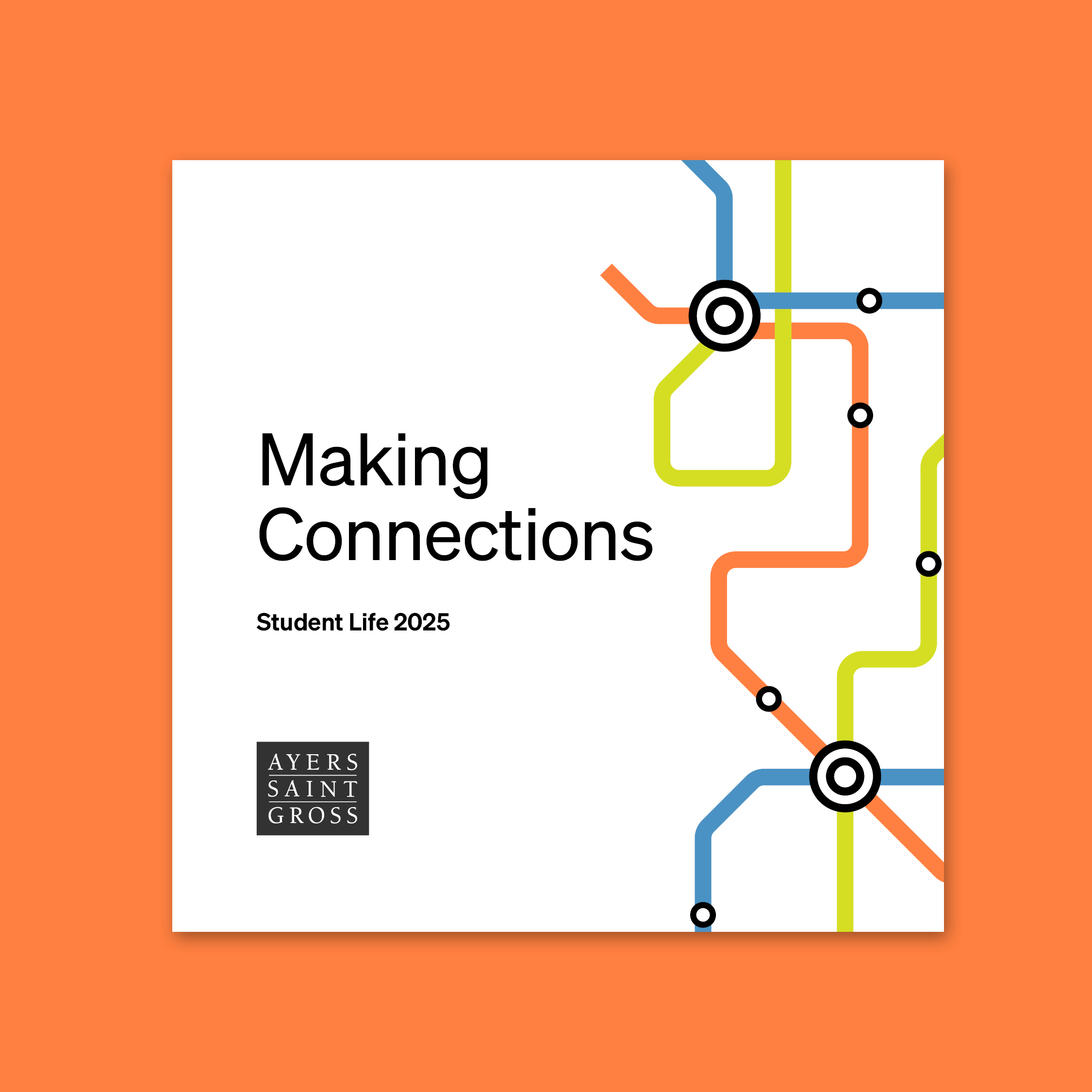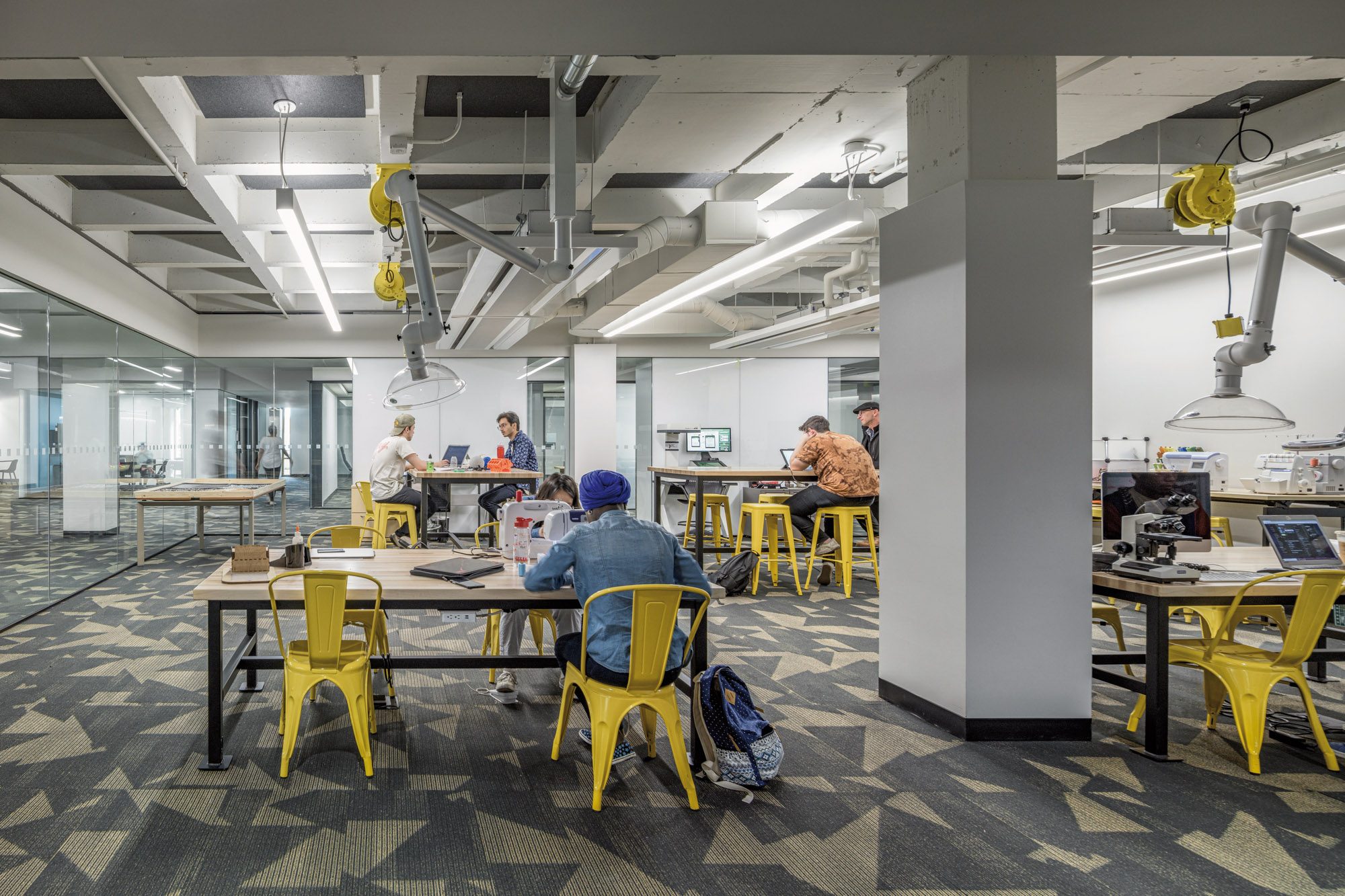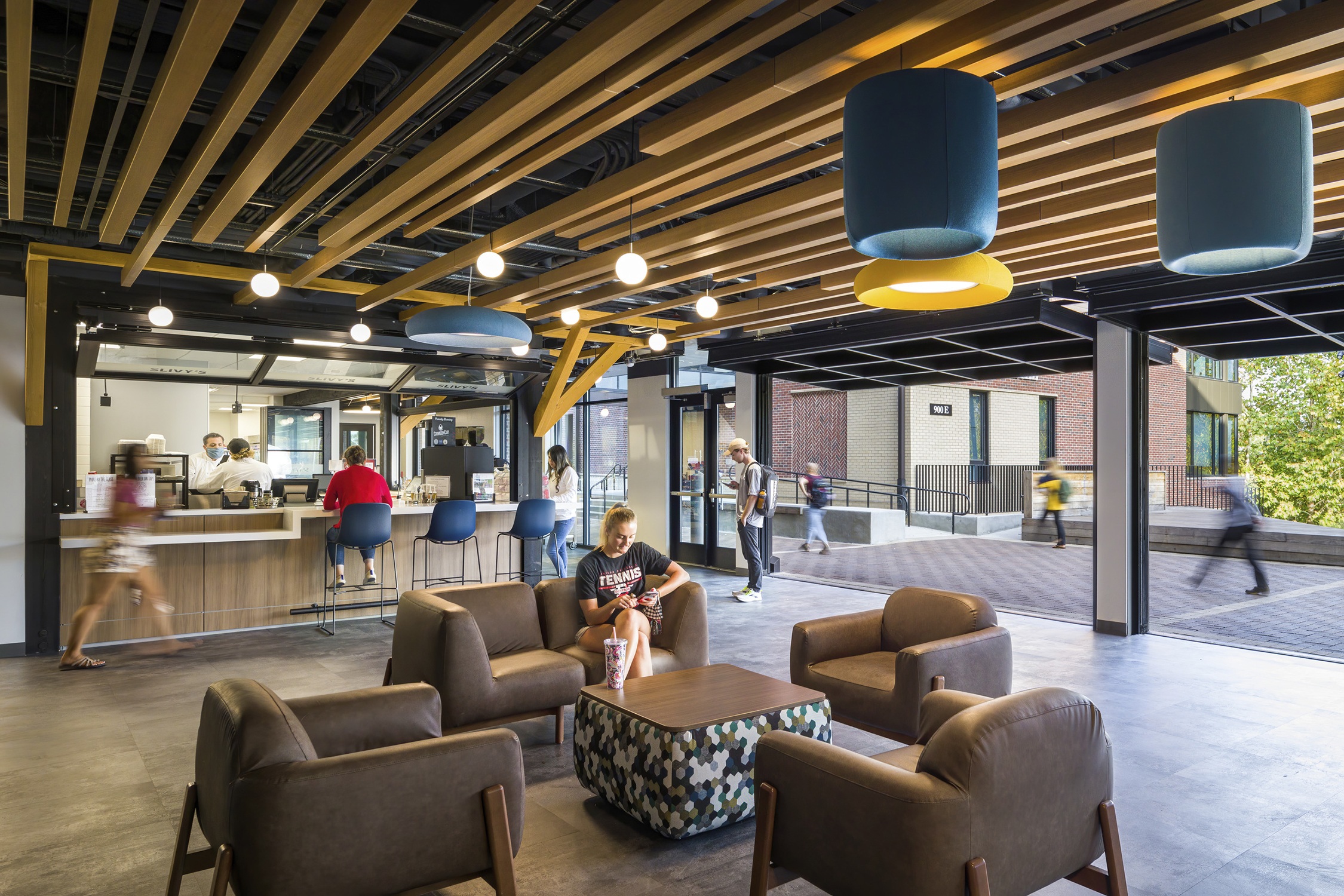At Ayers Saint Gross, we believe that great campus design does more than cultivate beautiful, functional places; it creates opportunities for students to thrive. Our latest Comparing Campuses research poster explores how physical space fosters belonging, inclusion, and human connection and, thus, is a critical component of student success and institutional resilience.
This work celebrates the role of designers and institutional leaders in shaping campus environments where all students can feel welcomed, valued, and connected. Students who experience a genuine sense of belonging are more likely to flourish academically, socially, and emotionally. That’s not just a theory — it’s backed by data.
Belonging Starts with Seeing Who Students Really Are
Today’s undergraduates aren’t one-size-fits-all. They’re working (44%), studying online (54%), and often juggling much more, such as parenting (18%), navigating a disability (21%), or being the first in their family to attend college (35%). Some are over 25, some are in clubs, and a surprising number check multiple boxes.
When we zoom out, the real student body is bold, busy, and beautifully diverse. Designing for inclusion means honoring different paths, pressures, and ways of learning. Inclusive campus environments don’t just reflect who students are; they help every student feel like they truly belong.
Belonging by the Numbers
A sense of belonging is a universal human need: the desire to be seen, supported, and included. On campus, it can be the difference between a student feeling empowered or overlooked. The National Survey of Student Engagement underscores this truth:
- 89% of students report feeling comfortable being themselves at their institution.
- 78% feel valued by their institution.
- 78% say they feel like part of a community at their institution.
These are strong numbers, but they also mean that roughly one in five students still feels disconnected or undervalued. That gap matters. Inclusive, intentional design can help close it by creating environments where all students feel like they belong.
Building Belonging Through Design
The built environment has profound power to support or inhibit belonging.
At the heart of the poster is a practical framework: 12 strategies that translate inclusive values into actionable design moves. From thermal and acoustic comfort to biophilic materials, flexible furnishings, and zones for both connection and retreat, these elements demonstrate how thoughtful physical environments support student life. Each strategy is brought to life through real projects, showing how intentional design can foster community, reduce barriers, and help students thrive.
Visually, the poster is vibrant, layered, and colorful, yet clear. Each campus space typology is illustrated through a distinctive sketch-over-photograph technique that bridges concept and reality. Whether it’s a wide, accessible circulation path that invites interaction or subtly varied lighting conditions that support focus and calm, each example underscores how seemingly ordinary design choices can impact student life.
Planning With Purpose
This research reinforces what our design philosophy has long embraced: inclusive, human-centered design is essential for building resilient, thriving institutions. These strategies help campus leaders, planners, and architects create spaces that quietly and powerfully reinforce values of inclusion and connection.
While these design approaches may be nuanced, their impact is anything but subtle. They lay the foundation for welcoming campuses that see and support students as they are and help them succeed.
Let’s keep shaping spaces where everyone feels seen, valued, and empowered to learn.
View or download the poster.
Shannon Dowling is an architect, space analyst, and educator who focuses on creating research-driven and student-centered learning environments. Laura Wheaton is an architect and planner and a winner of the 2024 AIA Young Architects Award.
